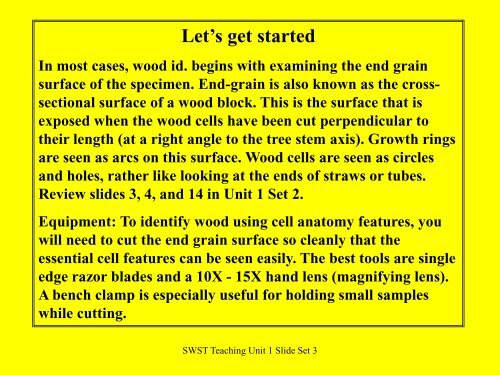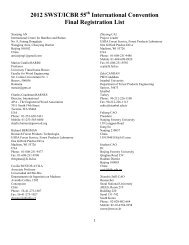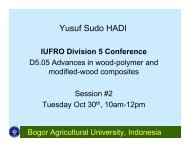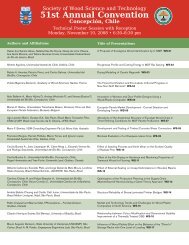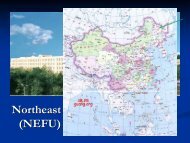Wood Identification - Society of Wood Science and Technology
Wood Identification - Society of Wood Science and Technology
Wood Identification - Society of Wood Science and Technology
You also want an ePaper? Increase the reach of your titles
YUMPU automatically turns print PDFs into web optimized ePapers that Google loves.
Let’s get started<br />
In most cases, wood id. begins with examining the end grain<br />
surface <strong>of</strong> the specimen. End-grain is also known as the crosssectional<br />
surface <strong>of</strong> a wood block. This is the surface that is<br />
exposed when the wood cells have been cut perpendicular to<br />
their length (at a right angle to the tree stem axis). Growth rings<br />
are seen as arcs on this surface. <strong>Wood</strong> cells are seen as circles<br />
<strong>and</strong> holes, rather like looking at the ends <strong>of</strong> straws or tubes.<br />
Review slides 3, 4, <strong>and</strong> 14 in Unit 1 Set 2.<br />
Equipment: To identify wood using cell anatomy features, you<br />
will need to cut the end grain surface so cleanly that the<br />
essential cell features can be seen easily. The best tools are single<br />
edge razor blades <strong>and</strong> a 10X - 15X h<strong>and</strong> lens (magnifying lens).<br />
A bench clamp is especially useful for holding small samples<br />
while cutting.<br />
SWST Teaching Unit 1 Slide Set 3


